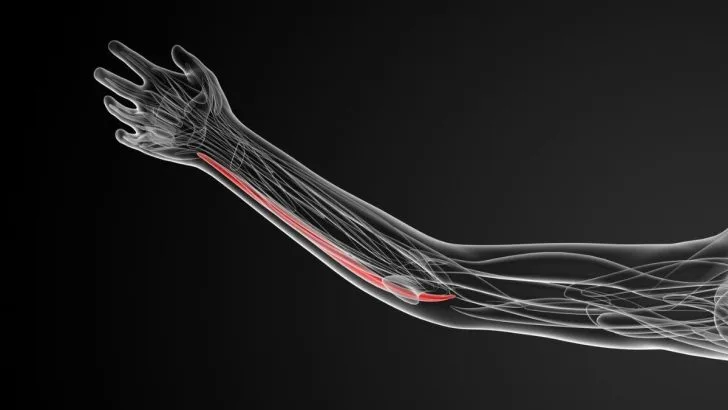Out of all the forearm muscles in the anterior compartment, it’s the flexor carpi ulnaris that’s the most medial. Due to its origin at the ulna, it’s also one of the easier muscles to injure because the ulna nerve can often get trapped between the two heads of this muscle. More on this in just a moment.
In this article, you’ll find some flexor carpi ulnaris tendonitis exercises to rehabilitate and strengthen your forearms without making your injury worse. I’ll also show you my favorite flexor carpi ulnaris stretch as well as an alternative stretch that you can do virtually anywhere.
Related flexor guides
- Flexor carpi radialis stretch
- Flexor digitorum profundus exercises
- Flexor digitorum superficialis stretches exercises
- Flexor pollicis longus exercises
Flexor carpi ulnaris anatomy
Unlike most of the other superficial forearm flexors, the flexor carpi ulnaris has two heads; a humeral head and an ulnar head. [1] As the names suggest, the humeral head originates from the lateral side of the humerus, while the ulnar head originates from the posterior border of the ulna.
These two muscles eventually converge via a common tendon, which then goes on to insert into the hands and fingers. As such, the flexor carpi ulnaris is what you call a fusiform muscle in that it’s tapered at the ends and widest in the middle, much like the forearm itself. [2]
You can actually feel the tendon of the flexor carpi ulnaris by palpitating your wrist joint, and when injured, people often complain of a deep ache in their forearm muscle. This happens because, as one of the primary forearm flexors, it’s very easy to trigger this muscle’s activation in a number of different activities.
As well as flexing the wrist, the flexor carpi ulnaris also adducts the wrist by moving your hands closer to the midline of your body. [3]
Flexor carpi ulnaris exercises
It’s an excellent idea to talk to a physical therapist if you suspect that your pain or discomfort is originating from your flexor carpi ulnaris. Nonetheless, trying out a few exercises may help to relieve your pain (especially the stretches) and add strength to your muscles so that they become more resistant to future injuries.
1. Eccentric wrist flexion
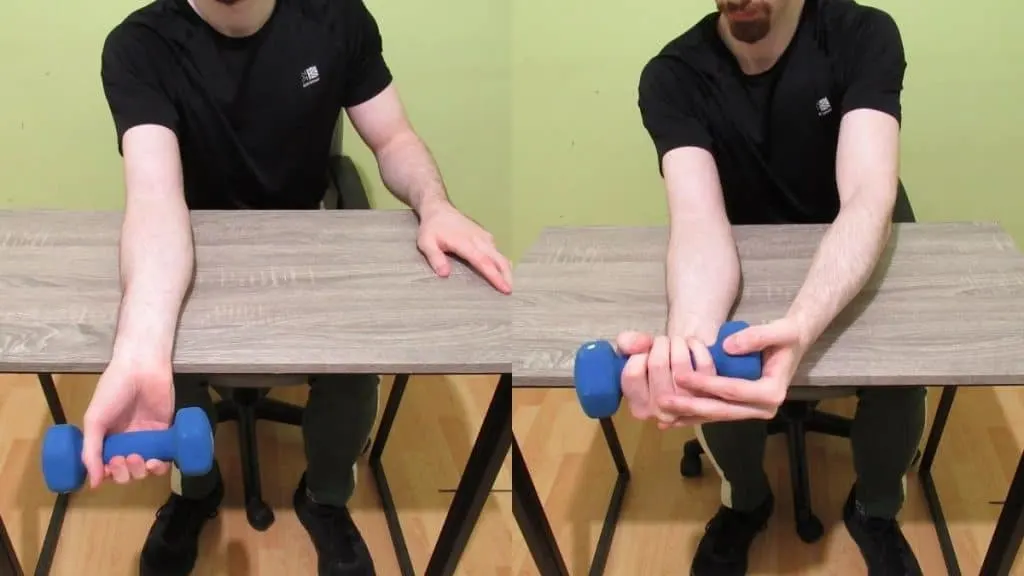
This is one of my favorite flexor carpi ulnaris tendonitis exercises because it strengthens the muscle without overloading it from day one. To do it, you’ll need a light dumbbell (or some wrist weights) and a flat surface, like a desk, where you can easily hang your hand off the edge.
First, place the top side of your forearm on the flat surface so that your palms are facing up. Then, with the dumbbell in the palm of your hand, lower it towards the floor by bending your wrist. Once you feel a deep yet comfortable stretch in your forearm, use your other arm to lift the weight back to the starting position. Repeat this motion for 2-3 sets of 10-12 reps.
Since the eccentric/lowering phase of a rep is what builds the most strength and muscle mass, this exercise is the ideal starting point for those who haven’t done much forearm work in the past.
Once lowering the weight becomes too easy, however, you can increase the weight of the dumbbell. However, I recommend against increasing the weight significantly because it’s very easy to injure a small joint like the wrist.
On this particular exercise, it’s more important to feel your muscles working than it is to lift heavy weights.
2. Full wrist curl
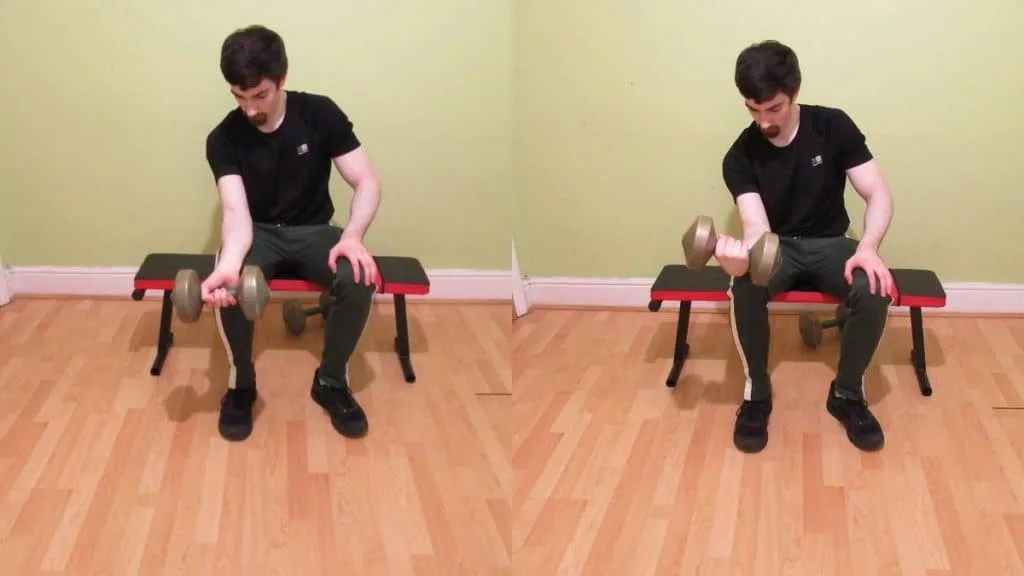
This is one of the best flexor carpi ulnaris exercises for those seeking to develop lower arm strength because it engages the flexors throughout the whole rep.
Like before, you want to place your forearm on a flat surface so that your palm is supinated (facing up). Then, lower the dumbbell towards the floor until you feel a comfortable stretch.
Now, instead of using your other arm to lift the weight up, I want you to curl your hand towards your body until you feel an intense contraction in your forearm.
From there, simply repeat for 2-3 sets of 10-15 reps. And don’t forget to train your other forearm!
Related posts
- Anconeus muscle exercises
- Brachioradialis workouts
- Extensor carpi radialis brevis stretch
- Exercises for the extensor carpi radialis longus
- Extensor carpi ulnaris stretch
- Extensor digitorum exercise
- Extensor pollicis brevis stretches
3. Palm stretch with adduction
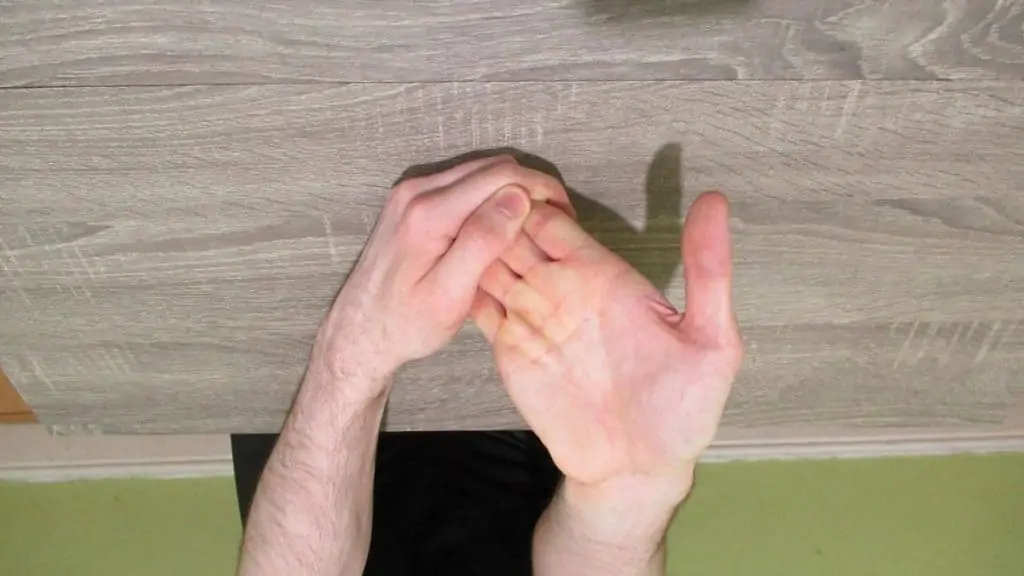
Since the flexor carpi ulnaris performs both wrist flexion and wrist adduction, it’s great that we can train both functions with one fell swoop via this exercise.
You can do this flexor carpi ulnaris stretch seated or standing—whichever allows you to focus on the sensation the most. So, with that in mind, here’s how to stretch the flexor carpi ulnaris optimally.
To begin, place your arm out in front of you so that your palm is facing up. Next, extend your palm downwards so that your wrist begins to bend. Then, slightly adduct your hand, which is to say, rotate it towards your body.
Complete the stretch by applying a small amount of pressure to your working hand with your opposite hand. You’ll notice that adding in this extra adduction makes the stretch feel different. And that’s because you’re better engaging your flexor carpi ulnaris by training both of its functions simultaneously.
4. Palm stretch (wall)
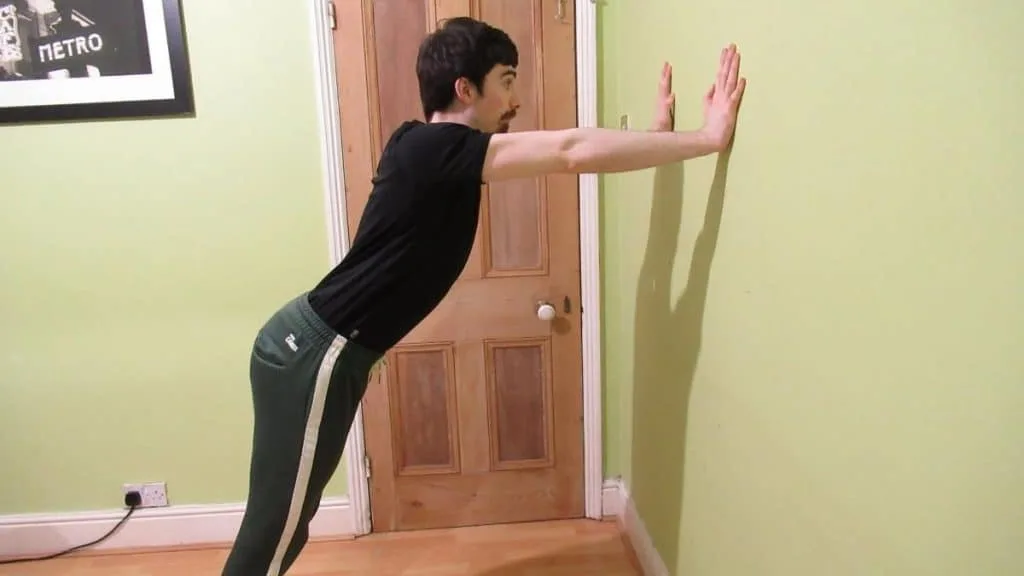
You can also perform the above stretch on a wall as part of your flexor carpi ulnaris workout. I recommend trying both variations and seeing which provides the best flexor carpi ulnaris stretch for your body.
Place your palms against a wall with your elbows fully locked out. Then, like before, adduct your wrist by rotating It forwards. From there, you just hold the stretch for 10-20 seconds before moving onto your other arm.
Don’t forget these muscles:
Which flexor carpi ulnaris stretch is the most effective?
I prefer the first stretch because it’s easier to control the amount of force applied to the working arm. While the wall stretch is certainly one of the better flexor carpi ulnaris tendonitis exercises out there, it’s easy to lean too much of your body weight into the stretch and make it overly intense, which could actually hurt your wrists.
Conclusion: What are the best flexor carpi ulnaris strengthening exercises?
For the best results, you’ll want to pair a stretch with a flexor carpi ulnaris strengthening exercise like a wrist curl. This way, you’ll make the muscle more resistant to future stress while also relieving any of the built-up tension within the muscle belly.
While I like wrist curls as a strengthening exercise since they require minimal equipment (and they’re great for patients to do at home), any exercise that works the forearm flexors will train the flexor carpi ulnaris very well, too.
References
- Lung, B. E., & Siwie, R. M. (n.d.). Anatomy, Shoulder and Upper Limb, Forearm Flexor Carpi Ulnaris Muscle. National Center for Biotechnology Information. https://www.ncbi.nlm.nih.gov/books/NBK526051/
- Gorman, N. (2020, October 29). Flexor carpi ulnaris muscle. Kenhub. https://www.kenhub.com/en/library/anatomy/flexor-carpi-ulnaris-muscle
- Knipe, H. (n.d.). Flexor carpi ulnaris muscle | Radiology Reference Article | Radiopaedia.org. Radiopaedia. https://radiopaedia.org/articles/flexor-carpi-ulnaris-muscle-1

